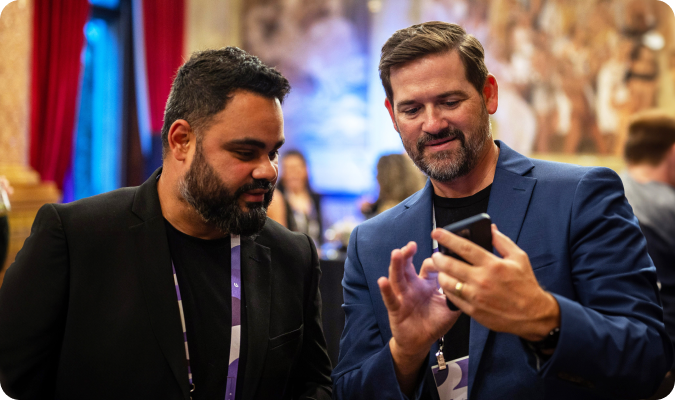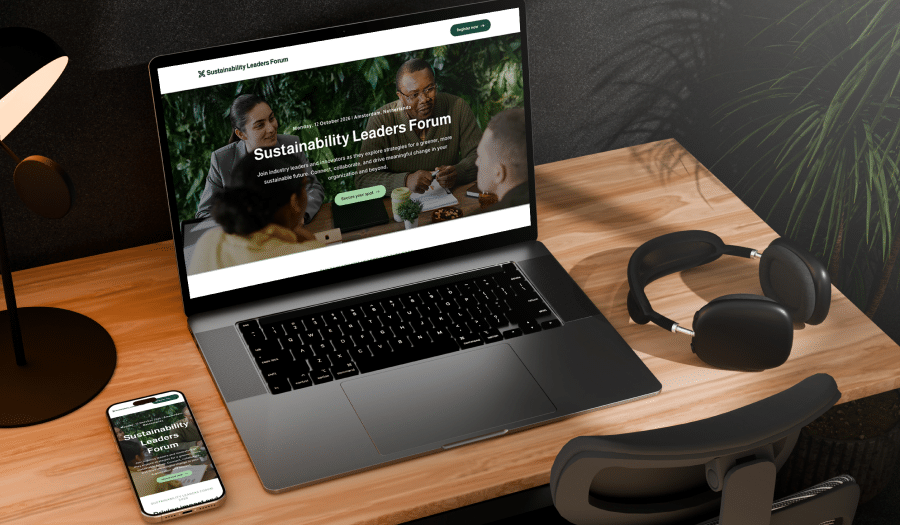
Design thinking is one of the best processes you can use to transform and improve your events. It’s the same approach that Steve Jobs used to reignite Apple’s success in the 1980s and you can start using it from this day on to make your events more memorable and impactful.
The best part? Design thinking doesn’t require any additional event budget. It’s just a new way of approaching events that puts your attendee’s needs and desires at the center of everything you do, using testing and iteration cycles to develop an event formula that delivers.
So, if you want to improve your event management skills and enhance your creativity, you might want to think about adopting design thinking.
What is design thinking?
Design is the process of creating simple and effective solutions to people’s problems. When we think like a designer, we influence how things function and look so they can better solve people’s problems.
Design thinking is an inclusive and iterative, human-centered process used to create innovative solutions to complex problems. It’s also a mindset that fosters empathy, curiosity, creativity, collaboration, and iteration. To produce the best solutions, it requires ongoing collaboration with stakeholders and end users.
It can be implemented by anyone, not just professional designers. You can use the process to solve personal, social, and business challenges. If you want to use it to improve events, then you can collaborate with your attendees, speakers, exhibitors, and sponsors to come up with new solutions.
How to improve event planning with the five phases of design thinking
The design thinking process consists of five stages. They don’t have to be completed in a linear process and they often overlap, run in parallel, and repeat.
- Empathize: Take time to understand your end-users.
- Define: Gain clarity about the problem(s) they face.
- Ideate: Generate ideas or solutions to those problems.
- Prototype: Create and experiment with possible solutions.
- Test: Refine your solution based on real-world feedback.
Remember, the design thinking process prioritizes progress over perfection. It’s about making consistent, incremental improvements that evolve into groundbreaking solutions.
Let’s explore how you can apply all of the design thinking phases to improve your event management skills, whether you’re running in-person, hybrid, or virtual events.
Empathize
Start by talking to your attendees, speakers, sponsors, and exhibitors. Your goal is to learn more about their context, thoughts, behaviors, and challenges. Consider the entire experience, from before, during, and after the event.
- What are their key motivations for attending?
- What are their goals?
- What’s most important to them?
- What has and hasn’t worked well for them in the past?
- What things have been missing from past events they have attended?
- What do they want from events and why?
You need to keep asking why to find out the most fundamental reasons why people want certain benefits from events. Make sure that your questions are open-ended so you can facilitate honest discussions. You can also experiment with pre-event surveys, focus groups and interviews, and previous event data. Try observing your guests and sponsors at your events to see how they behave.
Define
Start reviewing your discovery notes from the empathize phase to identify common themes, thoughts, behaviors, patterns, and problems that occur frequently at your events. What are the specific friction points that keep coming up? For example, are there often transport problems that take a long time to resolve? Are the queues for checking in or getting a coffee in between sessions always too long? Constantly gather these insights and document your findings in a way that’s easy to share with your team.
You can use online tools like Miro or Lucidchart to document issues. A simple sheet of paper, whiteboard, or sticky notes also work just as well. The most important factor is to keep your defined problems visible so your team can continue solving them.
Ideate
Ideation is a fun phase in which you can start brainstorming solutions to the problems you have identified. You could start with paper, a whiteboard, or sticky notes. Use a collaborative tool that works best for your team to sketch out your ideas and see how they connect to each other. Make sure you’re working as a team and have the right environment to bounce ideas off each other.
Playing a game called, “Worst possible idea” is a good way to break the ice. You can challenge each other to come up with the most nonsensical approach as this can get creative ideas flowing. Remember that this is an expansive and exploratory phase. All ideas are welcome and you will have the opportunity to fine-tune them in the next design thinking stages.
Prototype
Take one of the most promising solutions you have identified and create a simple version that you can start developing and testing. It’s a good idea to start small so that you can start gathering feedback on your idea as soon as possible.
You’re not trying to re-engineer your entire event experience or fix huge problems first. You’re trying to gather learnings that you can continue building upon. You might start with a new workshop format or a different type of session interaction. You could be exploring a new approach to your registration site, pre-event communications, or room layout. Pick one problem to solve and move to testing your solution, gathering feedback, and developing improvements. Your solution doesn’t need to be perfect at this stage. That’s why it’s called a prototype.
Test
Now, you can start engaging event stakeholders to provide feedback on your prototype. It can be difficult to find participants who are willing to give their time and meaningful feedback. So, consider selecting people who are representative of your final target audience and consider providing an incentive if necessary. Gift vouchers, hampers, swag, prize draws, event tickets, discounts for upcoming events, and payment are all valid ways to incentivize user feedback. The testing phase is always a worthwhile investment because you can end up making some big discoveries while making quick, incremental improvements that set your solution up for success before you release it more widely.
Progress over perfection
Perfection sounds nice in theory. But, chasing perfection can stop us from developing great ideas. Most ideas don’t come out perfect on the first go. We have to develop, release, and test them in order to learn, make progress, and keep moving forward. When it comes to improving events, remember that stalling for perfection can cost more than mistakes. Design thinking helps us take considered action and puts us on the path to excellence.
Attendee Experience | Best Practice | Event Planning & Management
See EventsAir in action
Discover why 12,000+ event professionals trust EventsAir to deliver effortless events, every time.




